
Figure 1: Hoover Dam at night in Black Canyon on the Colorado River between Nevada and Arizona
Among the throng of pressing matters our generation, and those to come, must address stands a daunting figure; the energy question hand-in-hand with its potentially divorceable question of climate change. In attempts to satisfy the former while dispelling the latter, nations have turned their eyes to the concept of renewable energy, renewable in reference to its ability to be reproduced indefinitely with proper management. As of 2015, renewable energy composed 20% of the global profile, with 80% of that energy captured from water resources through the construction of dams. That 80% of the current global renewable energy produced composes only roughly 22% of the total “technically feasible hydropower potential” of upwards of 15.6 million GWh per year (Zarfl et al., 2015). Under the Rio+20 targets for countries to meet energy needs through Kyoto-compliant energy resources, the large amount of potentially harvestable energy would excite any nation toward the construction of more dams to tap into the reserves. In accord, however, with the modern evolution of the engineering field, the question is not, “can we…?” but “should we…?” A little investigation into conventional hydropower production and its implications reveal staunch “inconveniences” to that effect…
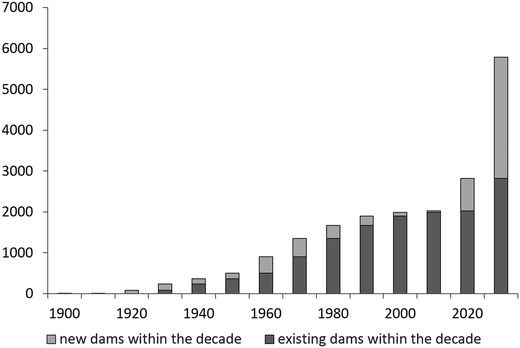
Figure 2: the explosion of the Dam Boom currently in progress
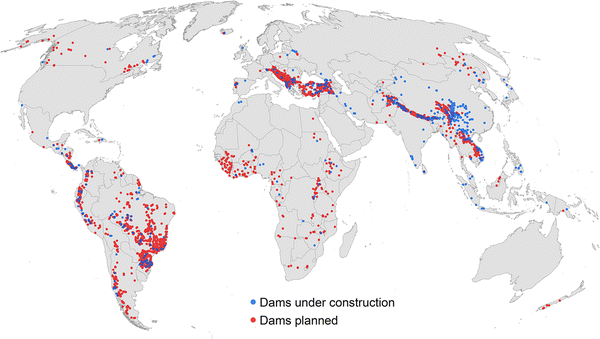
Figure 3: Geospatial dispersion of future dams
Dams produce their power through channeling water into conduits leading to turbines which capture the energy and convert it to electricity. A viable gradient is created by blocking the flow, forming reservoirs of much greater height so that the channeling of water to the downstream portion would produce more energy.
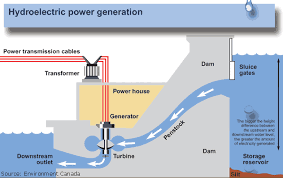
Figure 4: Diagram of harnessing hydropower
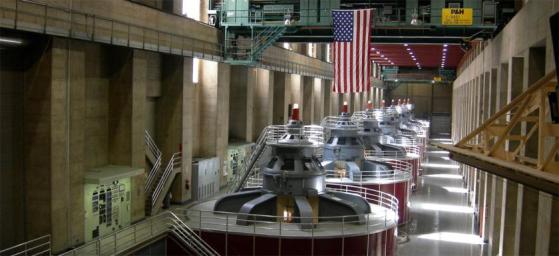
Figure 5: Generators fed by turbines at the Hoover Dam
The construction of a dam, however, cripples the viability of a watershed and its streams to perform the role they have in supporting life through social, cultural, ecological, and economic wounds. Ecologically, dams disrupt the flow of water, leading not only to lower flows downstream, but lower temperatures and dissolved oxygen content as well. As for natural flow regimes, widely fluctuating patterns may be hampered by a more static flow regime from a dam while patterns that are typically steady may be suddenly changed by less static dam regimes. The formation of the reservoir not only displaces people from their homes, and territorial grounds for tribes or other ethnic minorities, but deprives them of the way of life and resources that were theirs in their territory. Those losses are normally not compensated, and the displacement process verges on violations of human rights. The Three Gorges Dam in China’s Yangtze River represents vividly the huge costs of big dam construction, yet its existence provided proof it could be done and has sadly encouraged China to spur on the coming forth of a Dam Boom throughout the world, despite the governments recent acknowledgement of all the problems the dam is now known to have caused.
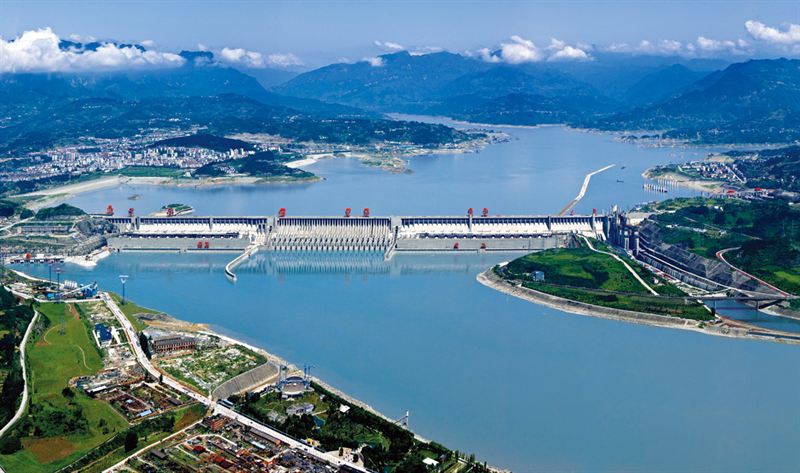
Figure 6: Three Gorges Dam near Yichang, Hubei in China
In the United States, the problems of dams and other hydropower facilities are being addressed by Low Impact Hydropower Institute, which offers a Certificate Program to set apart facilities whose presence is low impact. They established 8 criteria to gauge a site;
-
- Ecological flow regimes that support healthy habitats
- Water quality supportive of fish and wildlife resources and human uses
- Safe, timely and effective upstream fish passage
- Safe, timely and effective downstream fish passage
- Protection, mitigation, and enhancement of the soils, vegetation, and ecosystem functions in the watershed
- Protection of threatened and endangered species
- Protection of impacts on cultural and historic resources
- Recreation access is provided without fee or charge
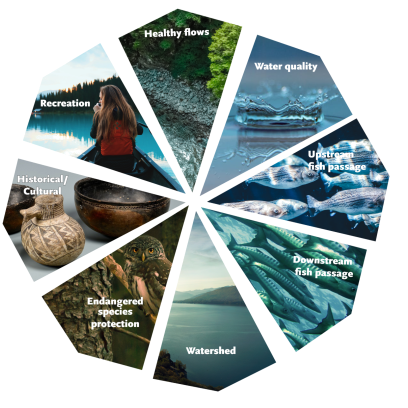
These criteria, once met, merit a certificate of approval for facilities under the authority of relevant state or federal resource agencies that protect the resources mentioned in each criterion. Each criterion has a specific goal statement, and alternative standards are created for each one to create a variety of ways various facilities, including dams, can be represented as low impact. This system allows sites to be recognized for their environmental mindfulness, and is often necessary for hydroelectric facilities to receive eligibility in state Renewable Portfolio Standards (RPS). The system, however, does not address the social or cultural/historical wounds inflicted by the construction of such facilities.
International Rivers, a watchdog of global freshwater corridors and the people groups who depend on them, keep close watch over the impacts of dams constructed and place the stories from remote corners onto the global stage. Their articles and stories raise the hard and fast questions of our approach to the vast reservoirs of hydroelectric potential on the planet. For example, the Brazilian government has been trying to push construction of dams in the Amazon River Basin for years. In 2008, they were held off from construction of such dams in the Xingu River by the protesting of hundreds of indigenous people groups from all corners of the Amazon Basin. Several tribes sent representatives donning ceremonial garb and paint, performing rituals not typically seen outside the village, and advocating for their peoples’ needs in light of the potential projects. For them, their protests were a success, but for others the same can not be said.
How can we address the Global Dam Boom displacing millions worldwide while also disrupting the natural systems in our watersheds? Is it right to sacrifice the good of some for the good of many? Are there other ways hydroelectric power can be produced?
I couldn’t figure out how to edit after I published the blog, so I’m posting my sources here…
Sources:
http://www.ucsusa.org/clean_energy/our-energy-choices/renewable-energy/how-hydroelectric-energy.html
http://lowimpacthydro.org
https://www.internationalrivers.org/campaigns/three-gorges-dam
https://www.internationalrivers.org/problems-with-big-dams
Click to access wrr_june2008-fi.pdf
(The one above has the stories of people groups and their interactions with big dam construction)
http://e360.yale.edu/features/the_dam_building_boom_right_path_to_clean_energy
https://link.springer.com/article/10.1007/s00027-014-0377-0
(the last two are particular informative!)
LikeLike
I think that the future development of solar power, wind farms, and Thorium reactors will play a big part in hindering the development of dams. I’m not familiar with China’s generally landscape or space availability but the mass production of hydroelectric dams in China may be attributed to limited land space due to overpopulation issues. Solar power in particular will help solve this issue of generate electricity with limited space, but it will take some time for this too become a viable alternative.
LikeLike
In your picture of planned dams and newly constructed dams there were none in the Continental US. I think that speaks to the future of dams. In a world where we are screaming that we need renewables at any cost, can we blame countries like China who see it as an opportunity? At the end of the day, I doubt hydroelectric power produced from the construction of dams will be a viable pathway to future sustainability, so this must be replaced by solar and wind. We must consider what will happen if we require countries to meet renewable requirements. Its cheap to build a dam and to harness the hydro-electric power gradient, but like you pointed out it has a huge environmental cost. If we push too hard for a renewable energy world, could we lead countries to dam up all of their rivers? Yes, we would reduce our carbon footprint, but would it be worth destroying all of our established watershed ecosystems? This was a great read and it poses some serious issues with hydroelectric power.
LikeLike
I am surprised that there is still a push for the development of new dams given the price tag and the huge impact they cause to the ecosystem. I recognize that they are a large generation source, almost 7% of the U.S. energy portfolio, but I do not think they are the energy source of the future. Unfortunately, the appeal of the permanent and clean energy they produce outweighs the environmental and price impact they cause in many countries, namely China. If they do not listen to the many effects dams have, then the market must remove the feasibility of further dam construction through new, better and cheaper solar and wind technologies. Further investment in higher capacity, more efficient nuclear plants could also help to slow down dam growth outside of the U.S.
LikeLike
I think that most people think of dams as a positive source of power because they are not fossil fuels. But they are still very detrimental to the local environment. It is a difficult balance to strike with many alternative fuel sources. Wind turbines knock birds out of the sky for example. I think the solution is to not invest too much of our energy consumption into one source. If we can keep our portfolio as diversified as possible this will lead to greater stability and less overall impact.
LikeLike
Thanks for positing this! After reading your post I did a little more research and found that according to eia.gov, a majority of dams were not built specifically for hydro power, they were instead built for flood control, municipal water supply, and irrigation water and then additionally used to generate electricity. I think that if this is the case and these dams will be created for other purposes regardless, I think that in some cases the benefit gained from the hydro power may more outweigh the negative environmental impacts of just the turbines and generators.
LikeLike
I was unaware that the development of dams is still so prevalent. In another course, we had watched a video about dams and it had mentioned that many of the dams made in the Dam Boom were constructed brashly because it was an era of development. Thus, there are some hydroelectric dams that require as much money to maintain as they are producing in the form of electricity. As someone else had mentioned in the comments, we cannot rely too heavily on one method to generate electricity. I think the United States needs to thoroughly assess the current dams to remove unnecessary ones and to reconsider the placement of future ones. They could look into other alternatives besides hydroelectricity unless the benefits of creating a dam in a certain location truly outweigh the negative environmental impacts,
LikeLike
With such a push for renewable energy, I am not surprised that many countries are moving towards hydroelectric power. Out of the three major renewables, hydro is the most consistent one. We can’t rely totally on wind and solar because those can be quite unpredictable. We also have to see that dams are created for much more than just electricity generation. Is that a key benefit to building a dam? Yes, but its not the only reason dams are built. Im not saying that we should throw all of our money at hydroelectric power, but right now, to reduce the carbon footprint, dams are the most viable option. There are going to be negatives with all power production, but we need to look at which options are viable and consistent to power the future of the world.
LikeLike
Deciding if even one life is out-weighed by the lives of many is always a hard decision, so seeing a group of people effected either way is hard. While reducing our carbon foot print is extremely important, we must be careful not to jump on an easier solution before evaluating the costs. We may reduce the carbon released into the atmosphere, but what happens to the ecosystem surrounding the dam if there aren’t things like the Low Impact Hydropower Institute? The dam could cause a depletion of oxygen and the wipe out of a cornerstone species in the surrounding area and that entire ecosystem would crumble. I think we need to truly weigh our costs with our benefits in order to prevent a similar situation to the one we are in now.
LikeLike
In a world that is sometimes so deadest (rightly so) on the debate surrounding energy, it is odd to consider how hydropower is left out of the conversation. Then again, maybe that is just my bias from being raised in the U.S. that has exploited its hydropower to such a large amount that it is no longer looking to install more dams (as we see from that map in Figure 3). With major ecological side effects that occur from implementing dams, it is somewhat surprising to see European countries looking to install more of them. Even more astounding to me is the sheer number of planned or under construction dams worldwide. One would hope that such projects would deter developing nations from consuming pollutant and carbon dense energies, but we know for a fact that rapidly expanding economies like China are also quickly building up their nonrenewable energy capacity to continue their expansion. On another note, the geopolitical ramifications of damming up rivers can be another major issue that may come to a head in the coming decades, especially in the Middle East. If Turkey tightens their grip on the rivers’ water supply into the region, further conflict may erupt into full scale invasion for control of the rivers.
LikeLike
Brazil is the scariest, ecologically, of the planned dams section. Imagine the mighty Amazon to be dammed up and the rainforest flooded on top of all the deforestation issues. Ecologists sounded the alarm a long time ago, however our need for energy usually overrides those concerns. One of the main issues in the United States are the sheer number of “little” dams that are slowly falling apart. Looking forward in the United States, we need a concerted effort to remove as many of these “little” dams, which are usually out of date for its use, to open up small tributaries and creeks.
I think China and Brazil will realize the mistakes of damming too fast on too large of scales after the mistakes are made. The amount of land and human capital they will waste will surely bite them in the end. Look at the United States, and it seems common sense.
LikeLike
Hydropower is something we are realistic going to have to use in order to reach a goal of 100% renewable energy sources. With that said, damning does have potentially harmful effects on the environment around it. Not only does it displace people but it kills the species and ecosystem nearby. This past summer I went to Peru and visited a hydroelectric facility near Machu Picchu and one of the main concerns of this facility was the water that was being diverted from the river that could no longer be used by farmers for agriculture. This is just one example of the many side effects of damning. Another potentially useful source could be tidal power. This would likely have a much smaller negative effect, if any, than damning would.
LikeLike
I think in the world we live in, many are trying to reduce their carbon footprint to be perceived as though they are trying to mitigate emissions, and the easiest of the renewable energies to harness seems to be the hydroelectric power because the dams are going to built anyways. I think country’s are far more worried about sustained power generation than a sustained environment. Because of this, country’s put these hydroelectric dams because it kills two birds with one stone in terms of development and electricity production; they can control flooding while also generating electricity to add credibility to their perceived commitment of reducing climate change. When they report that they added a hydroelectric dam, they have succeeded in taking initiative to have renewable energy, and the rest of the world will now turn their heads a little, allowing them to continue whatever path they want in the power sector without complaints.
LikeLike
Human population has always grouped around freshwater ways. I think that developing nations see rivers as a means of close renewable energy. I would imagine that these dams, while costly, do not share the same capital requirements for infrastructure as solar or wind farms. The technology for hydro is already in place, while wind and solar are still evolving, so there is probably less capital risk involved with hydro as well. Someone did point out that there are no future dams planned in the United States. I think this shows promise that as technology advances, we will see fewer dams being built around the world as well.
LikeLike
I think hydropower is necessary for society to meet energy needs, especially if clean energy is to have a more significant role. In the US, I believe we have maxed out potential sites for dams and thus do not have a major problem with the increase of construction of dams. However, in developing countries, there are many opportunities for dams to be built and there is also a high demand for energy. However, as wind and solar become more popular, the construction of dams might be halted in order to protect the ecology of the rivers.
LikeLike
I did not realize how popular hydropower is in South America. It does seem like a good way to create energy domestically and have less carbon emissions, however, I wonder if the integrity of the Amazon will eventually be compromised due to new dam construction. I think destroying natural wonders like that could end up being a large deterrent of the creation of more dams in the future.
LikeLike
This was a really interesting post! I hadn’t thought about the human rights issues associated with dam construction before. But it makes sense that rivers are such a critical part of life for indigenous peoples. It is also worth pointing out that these people – like the tribes in the Amazon river basin – probably don’t have electricity in their rural villages. So not only does dam construction disrupt their patterns of life, they see next to no benefit from it.
LikeLike
This is a very interesting blog post. Dr. Gattie has told us that all the rivers in the US that can provide hydroelectricity are dammed up. So I think that is the reason we haven’t experienced any dam building in the US. The damage is already done in the U.S. People have moved, wildlife has evolved around the dams. But I am not in support of building dams. The environmental impact on ecosystems as well as the impact on humans in the area doesn’t seem worth it to me. Solar panels and wind farms seem much less harmful as a renewable energy source, as long as we aren’t destroying ecosystems where we place them. Typically the solar panels are being placed in hot deserts or areas where not much grows anyways.
LikeLike
Good article on all the possible consequences associated with dams! I think giving voice to the indigenous could have a big impact in higher level decision making. Everyone feels bad for the poor until they are the ones protesting against the development themselves.
LikeLike
Interesting read! Like some of the other readers mentioned, I also feel that as we continue to learn how to efficiently use other renewables such as nuclear, wind, and solar, hydroelectric will become irrelevant. This topic is one that always make me feel internally torn; as an engineer how could we ignore such a harness-able energy gradient? but as an environmentalist how could we degrade such a rich ecosystem for the sake of adding more energy to our portfolio? At the end of the day, all that comes to mind is: how renewable is an energy source if it comes at such a high price? As we’ve discussed on other blog posts, I personally have very strong sentiments of local waterways/watersheds back home, and I can’t imagine the remorse I would feel if there were all of a sudden plans to dam them up.
LikeLike
I think this is interesting, because hydropower is always mentioned as a source of renewable energy, but no one’s minds ever really jump to the destruction that dams can cause to the environment. There are trade offs with every single option, it is just a matter of where your priorities lie. If the dam boom is resulting directly from the Kyoto Protocol, it that considered cutting corners; or in other words, have other options been considered before choosing to resort to dams or are the new dams going to be as environmentally friendly as possible?
Also really interesting that this is an area where cultural/social and environmental issues collide, never would have realized that area would concern hydroelectric dams.
LikeLike
Hydroelectrical power is considered to have the least potential out of the forms of renewable energy. Other forms of renewable have minimum other environmental impact where dams take away from the environment. This blog was interesting to read especially since I just did a presentation over hydroelectric in a different class.
LikeLike
I think many of the dam’s in the United States should be phased out. Theres a documentary on netflix called Dam Nation that brought to my attention how a small number of dams can destroy an ecosystem. Many of these dams are tiny and power companies could match their relatively cheaply with other renewables.
LikeLike
This was an interesting read! I did not know all the negative consequences of dams before reading this article. I think that the main way to stop the push of creating dams is awareness of the environmental impact. Also if we can find alternative energy sources that meet the same standards without causing so much damage.
LikeLike
Personally I think it is going to take a balancing act of whether or not a dam should be placed in a certain location and will need to be decided on a case by case basis. They certainly have their drawbacks but I don’t see how with current technology humanity will be able to phase out fossil fuels and hydropower at the same time. Every energy source has its negative drawbacks and I think we will have to accept the lesser of two evils. More can be done to help mitigate these negative effects though such as passages to allow fish around dams. Hopefully one day in the future we will have improved technology that can enable us to no longer need dams.
LikeLike
Thanks for posting this Tyler! I enjoyed reading it and in particular, the picture with dots showing the dams planned or dams under construction caught my eye. I had no idea that there are that many dams that are planned to be built, and that is concerning to me. I guess I was stuck in the mindset that the United States isn’t building anymore dams so maybe they are a dying breed, but clearly not. I am not a huge fan of altering the natural flow and hydrology of the rivers becuase it has such a drastic impact on the aquatic ecoystem, but at the same time, I am a fan of carbon free energy. It is a tough choice to make.
LikeLike
In my opinion dams are not the solution to our sustainable energy crisis. The cost associated with constructing enough dams to wean us off fossil fuels is not practical. Also, locations are limited as to where you can place a dam as compared to solar or wind which have much more areas in the United States that you can implement them. The second thing I have against dams are the destruction it causes on ecological systems. It is not practical to fix one problem by creating another one.
LikeLike
I think given the rush to find alternative sources of energy, we are concerned with finding viable renewables rather than an energy source that has minimal environmental impact. I had no idea that so many dams were still being planned throughout the world. I’ve been to the Glen Canyon Dam and seeing the impact that these structures have on their surroundings is incredible. The US has essentially exhausted its viable locations for dams and hydropower plants and they are dying out. To me, it seems like the next step is urging/presenting evidence to the governments in each location with dam plans to consider each case individually as to how it will effect the environment and culture surrounding that area.
LikeLike
I was really interested in the hydro-electric industry and was a big fan of dams, however, after learning of the effects it has on the ecosystem I figured it will not be a infrastructure that will continue to build. Unless we find a new way to build, there will be a push to not disrupt the ecosystem and restrict a lot of companies from building new ones. As mentioned above, the current hydro-power system will not be the alternate source of the future, because it does not have been shown to be as eco-friendly as other others such as solar or wind energy.
LikeLike
Most rivers worth damming would have to be a larger river, a waterway of more ecological importance. Organic materials from within and around the river that would normally just wash downstream get built up behind dams and start to consume a large amount of oxygen as they decompose. When dam operators release this oxygen-deprived water into the river below, they harm downstream environments.While the needs of the people, power, can be seen as more important than the needs of the river, and its inhabitants, the concerns and effects must be taken no less seriously. In my opinion, dams have always seemed too environmentally disruptive, in the terms that I think that could be integrated into the natural system more smoothly creating a mutualistic and unintrusive relationship rather than a ham-fisted, disruptive relationship.
LikeLike
I believe all forms of energy come with its costs and its benefits. Dams are no exception to this rule. I suppose the underlying question is do the benefits of the clean energy overshine the costs. There are ways in which we can bring water temperature back up and oxygenate the water. There however are not ways to bring back culture destroyed and homes lost. The only way I could see would be to totally redesign how we make dams
LikeLike
I really enjoyed this article because it really shows that the U.S. is basically a bubble regarding dam construction. I never realized how many future damns are being built in places like South America and China. I think a key to stopping damns is going to be more interconnectedness on our global grid system. Some nations may only have access to hydro power for renewable resources, but if other nations could produce extra electricity and provide it to the dam nations, the need for future dams could decrease.
LikeLike
This is a great post on dams and the juxtaposition of potential energetic benefits with the diverse consequences of damming is framed very well. I have had some experience with the ecological consequences of damming, so I am surprised to see the large numbers of planned dams outside of the US, especially those planned in Europe. I can understand some of the planned dams within developing countries, and I cannot advocate for protesting these dams in developing countries because we did the exact same as a nation in order to satisfy a portion of our energy demand. This article furthers my belief in investing in non-hydro renewable research and development, however even those forms of renewable energy have their own consequences.
LikeLike
I agree with several of the other comments that I have seen. I am highly surprised that there are still so many countries pushing to build more dams. They are very costly, both in termsome of monetary value and in ecological value. The build of a damn disrupts so much of the area around them.
LikeLike
It’s interesting how damming is such a political issue (as it needs to be). Who really owns the waterways? When damming restricts flows downstream to other states or even countries, how are they compensated? It’s a very viable source of clean energy, but a lot more is at stake than people seem to realize.
LikeLike
I do agree that hydroelectric power has an important role in renewable energy generation, however I feel as though this sector will diminish and eventually fade over time. I feel that it is definitely possible to decrease the magnitude of the environmental impacts from building and operating hydroelectric dams, however there is a finite amount of water systems with the potential to produce hydroelectric power. Once we reach that limit we will be faced with the option to either invest in other forms of renewable energy or spend more resources on increasing the efficiency’s for the existing dams.
LikeLike
While it is unfortunate that hydroelectric dams come with several negatives, the positives of hydroelectric, as opposed to coal or natural gas, is quite substantial. All forms of energy production, whether renewable or non-renewable come with some kind of downside. The key is to identify the ones whose benefits outweighs their negative impact. Dams are going to keep popping up in other countries, because for those countries, the good outweighs the bad. It is hard to tell a country not to build dams, because to do so, they need to be given a better alternative. From my point of view, there really isn’t a better alternative to produce energy on that scale.
LikeLike
This is a great post! Thanks for bringing to light the issues that arise when culture is not considered when building new infrastructure and technology. As engineers, it is our responsibility to include stakeholders when planning and building designs. It is apparent that a lot of the world does not hold stakeholder’s opinions to be that important, and we still see this in the U.S. all of the time.
LikeLike
Thanks for the article! I wonder what the relative impact of a nuclear plant vs a dam is. It’s clear that we need to be developing more carbon-free energy sources but it’s difficult to balance the pros and cons of each kind. Does the flooding of habitats do more damage than burying concrete bunkers of nuclear waste in them? It’ll be interesting to see how many of these planned dams are actually built considering how expensive they can be.
LikeLike
I think the question of whether it is right to sacrifice the good of some for the good of many is a difficult one to answer. This is a definitely a topic that I am split on because I see the advantages of both sides of the argument. I’m a strong believer that major advances in other technologies such as solar generation and storage will make the need for hydroelectric dams slowly dwindle.
LikeLike